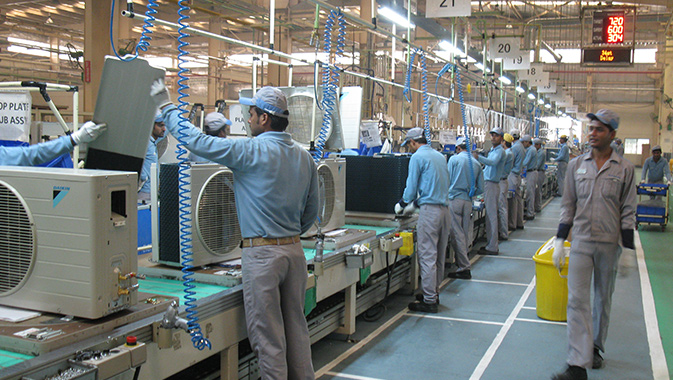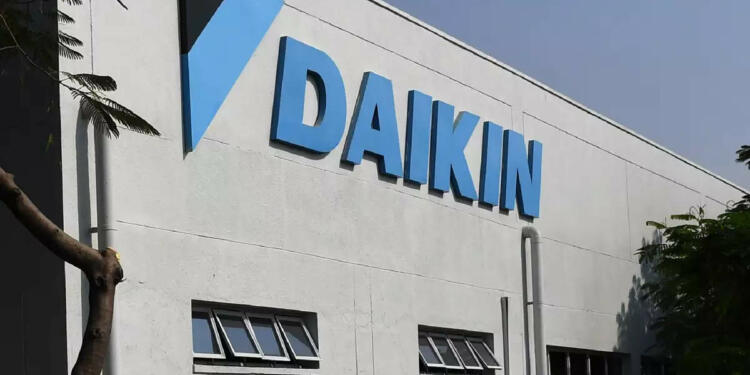Production Linked Incentives (PLI), the scheme designed by the Modi government to promote manufacturing in India, is becoming a huge success. Initially, the scheme was floated for the electronics sector only, but after its huge success, the government decided to implement the PLI scheme for multiple sectors in which India was import-dependent. Under the Atma Nirbhar Bharat Program, the government is encouraging foreign as well as Indian companies to manufacture in India, and in the last year, companies across the world have invested in India.
The latest company to commit a big investment in India is Daikin, which announced the opening of a third factory in Sri City, Andhra Pradesh, dedicated to exports in developing countries of Asia, America, and Africa.
“With the starting of the third manufacturing unit at Sri City, Andhra Pradesh, Daikin aims to achieve aggressive market growth in the AC exports over the next few years. Daikin wants to make India its manufacturing hub to serve markets such as West Asia, Sri Lanka, Middle East, South America and Africa,” the company stated.

India has been a major importer of household appliances like AC, refrigerators, washing machines for a very long time and the government announced a PLI scheme for domestic manufacturing of these products. Thus, given the high local demand and incentive for manufacturing, the foreign companies want to make India a manufacturing hub to cater to local demand and international markets.
“For the AC segment, as a strategy, we are increasing our focus on markets that are witnessing rapid growth. India is the fastest-growing market for us. Daikin has a very clear strategic intent to enhance its air conditioning, air filtrations, and refrigeration portfolio, for which India has been identified as a developmental hub. We believe India has the potential to become our offshore delivery centre for R&D and exports,” said Kanwal Jeet Jawa, chairman, and managing director at Daikin India.
Daikin has so far invested over Rs 2,000 crore in India to set up its two factories and a research and development (R&D) center at Neemrana, Rajasthan.
So far, Western companies have been used to see India as a human resource center for research and development activities. Most of these companies refrained from opening up manufacturing centers because it was comparatively costlier in India despite lower labor costs. Manufacturing has not become competitive in India due to various constraints like the high price of electricity for industries, land, and no incentives from the government unlike in East Asian countries.
However, in the last few years, the Modi government has implemented many reforms, and the state government has also taken initiatives to attract industries. Moreover, the Modi government announced incentives for manufacturing products in India. The PLI coupled with reforms is attracting a large number of companies in India, especially those looking for an alternative to China.
The scheme will incentivise 13 sectors with a total outlay of 1.97 lakh crores, and it is the first comprehensive scheme to incentivise and subsidise industries in India. For the last few decades, the Indian government either subsidised and incentivised Agriculture or opened a PSU when it came to industries. And, despite such huge subsidies to the sector and the involvement of a large labor force, India entered the top 10 exporters of agricultural commodities only last year.
The incentivisation of industries would bring huge investment and has the capacity to make India the next industrial powerhouse of the world. The minimum production in the country is expected to be around Rs 37.50 lakh crores, and the minimum employment generation is expected to be one crore over five years.































